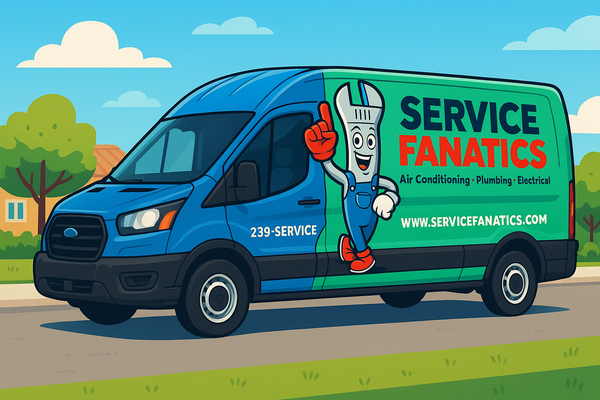How to Start a YouTube Channel for Your Small Business
Starting a YouTube channel isn’t just for influencers. Small businesses can utilize video to reach new customers, establish trust, and showcase their expertise. This guide shows you how to set up your channel, plan content, and grow with video marketing on any budget.

Video is one of the most powerful tools small businesses can use to build trust, attract new customers, and stand out from competitors. YouTube isn’t just for influencers and entertainers—it’s a free marketing platform where local businesses can educate, showcase, and connect directly with potential buyers.
If you’ve been thinking about creating a YouTube channel for your business but aren’t sure where to start, this guide will walk you through every step.
Why YouTube Matters for Small Businesses
- Massive audience – YouTube is the second most visited website in the world, with over 2 billion logged-in monthly users.
- Search visibility – YouTube videos frequently appear in Google search results, giving your business double the exposure.
- Local credibility – Customers often research before buying. Seeing you on video builds trust faster than text or photos alone.
- Cost-effective marketing – Creating video content no longer requires a big budget. With a smartphone and a plan, you can compete with larger companies.
Step 1: Define Your Channel’s Purpose
Before you start filming, clarify why you’re launching a YouTube channel. Ask yourself:
- Do I want to educate customers about my products or services?
- Do I want to build authority by sharing tips and expertise?
- Do I want to showcase success stories and customer testimonials?
For example, a home services company might post “how-to” maintenance tips, while a boutique retailer could highlight new arrivals or styling advice.
Step 2: Set Up Your YouTube Channel
- Create a Google Account – If you don’t already have one, set up a dedicated account for your business.
- Create a Brand Channel – Go to YouTube and create a channel under your business name, not your personal account.
- Add Branding:
- Profile picture (your logo works best)
- Banner image (use your brand colors and tagline)
- Channel description (include keywords about your services and location)
- Add Links – Include your website, booking page, and social media in your channel’s “About” section.
Step 3: Plan Your Content Strategy
Consistency is more important than perfection. Start with a few simple content types:
- How-To Tutorials – Show customers how to use, maintain, or get the most from your products.
- Behind the Scenes – Give viewers a look at your team, your process, or your workspace.
- Customer Stories – Short testimonials can be very persuasive.
- Product Demos – Highlight features, benefits, and real-life use cases.
- Local Community Content – Cover events, partnerships, or causes your business supports.
Pro tip: Create a list of 10–15 video ideas before you start, so you’re never scrambling for your next upload.
Step 4: Invest in Basic Equipment
You don’t need a Hollywood budget to make YouTube videos. Start with:
- Smartphone with good camera (most modern phones are plenty capable)
- Tripod for stability
- Ring light or natural lighting for a professional look
- Lapel microphone for clear sound
As your channel grows, you can upgrade to DSLR cameras, studio lights, and professional editing software.
Step 5: Learn the Basics of Video SEO
To get found on YouTube and Google, optimize each video:
- Title – Use keywords your audience searches for (e.g., “How to Choose the Right Kitchen Countertop | Naples Remodeling Tips”).
- Description – Write 2–3 keyword-rich paragraphs and include links to your website or contact page.
- Tags – Add relevant terms (business type, location, services).
- Thumbnail – Create a clear, eye-catching image with your branding.
- Chapters – Break your video into sections with timestamps for better user experience.
Step 6: Publish Consistently
Start with one video per week or every other week. Consistency tells YouTube your channel is active, which helps with visibility. Over time, you’ll learn what resonates with your audience and can double down on those formats.
Step 7: Promote Your Videos
Don’t rely solely on YouTube’s algorithm—promote your content across other channels:
- Embed videos on your website and blog
- Share on Facebook, Instagram, and LinkedIn
- Include links in your email newsletter
- Encourage employees and loyal customers to share your content
Step 8: Measure and Improve
YouTube Analytics provides insights into:
- Watch time – Are people finishing your videos?
- Traffic sources – Where are viewers finding your videos?
- Demographics – Who’s watching your content?
Use this data to refine your video topics, formats, and posting schedule.
Final Thoughts
Starting a YouTube channel for your small business may feel intimidating, but it’s one of the best ways to showcase your expertise and connect with local customers. By starting simple, being consistent, and focusing on helpful content, your channel can become a long-term asset that drives awareness and sales.
If your business is ready to expand its reach, don’t wait—hit record, upload your first video, and start building your YouTube presence today.





